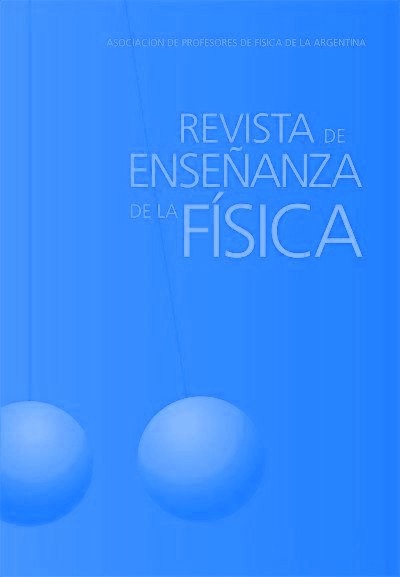Nonlinear equations in Physics, and their resolution using high order multi-step iterative methods
DOI:
https://doi.org/10.55767/2451.6007.v33.n3.36000Keywords:
Nonlinear equations, Iterative multi-step methods, Newton, Ostrowski’s method, PhysicsAbstract
This work provides the physics teacher with theoretical and computational foundations to solve nonlinear equations, very com-mon in solving physical problems. In the present research three physics problems are solved, which are: a sphere floating in water, non-free fall of a parachutist, compression of a real spring; making use of principles related to fluids, kinematics and dynamics. Nonlinear equations are obtained which are difficult and, in some cases, impossible to be solved by means of analyti-cal methods. To find an approximate solution to these equations we use iterative methods starting from traditional methods such as Newton, Secant, Steffensen to the introduction of multi-step methods with high order of convergence such as Traub, Ostrowski and methods of order eight designed from Ostrowski's method. Finally, an analysis of the results obtained by applying all these methods to each of the selected physical problems is carried out and, in this way, establish which iterative method is more appropriate in each situation.
References
Amorós, C. (2020). Estudio sobre convergencia y dinámica de los métodos de Newton, Stirling y alto orden. Madrid: Universidad Internacional de la Rioja.
Artidiello, S. (2014). Diseño, implementación y convergencia de métodos iterativos para resolver ecuaciones y sistemas no lineales utilizando funciones peso. Valencia: Universitat Politécnica de Valencia.
Chicharro, F. (2017). Análisis dinámico y aplicaciones de métodos iterativos de resolución de ecuaciones no lineales. Valencia: Universitat Politécnica de Valencia.
Cordero, A., Hueso, J., & Torregrosa, J. (2006). Problemas resueltos de métodos numéricos. Madrid: Paraninfo.
Cordero, A., Torregrosa, J. R., & Vassileva, M. P. (2011). Three-step iterative methods with optimal eighth-order convergence. Journal of Computational and Applied Mathematics, 235, 3189-3194.
Džunić, J., & Petković, M. S. (2012). A Family of Three-Point Methods of Ostrowski's Type for Solving Nonlinear Equations. Journal of Applied Mathematics.
García, J. (2017). Análisis dinámico. Valencia: Universidad Politécnica de Valencia.
Kung, H. T., & Traub, J. F. (1974). Optimal order of one-point and multipoint iteration. J. Assoc. Comput. Math, 21(4), 643-651.
Mathews, J. H., & Fink, K. D. (2000). Métodos numéricos con Matlab. Madrid: Prentice Hall.
Ostrowski, A. M. (1960). Solution of equations ans systems of equations. New York: Academic Press.
Ostrowski, A. M. (1966). Solutions of equations and systems of equations. Academic Press.
Steffensen, J. F. (1933). Remarks on iteration. Skand. Aktuarietidskrift, 64-72.
Traub, J. F. (1964). Iterative methods for the solution of equations. Englewood Cliffs, N.J., Prentice-Hall.
Ypma, T. J. (1995). Historical development of the Newton-Raphson method. SIAM Rev., 37, 531-551.
Downloads
Published
Issue
Section
License
Copyright (c) 2021 Santiago Quinga

This work is licensed under a Creative Commons Attribution-NonCommercial-NoDerivatives 4.0 International License.
Aquellos autores/as que tengan publicaciones con esta revista, aceptan los términos siguientes:Los autores/as conservarán sus derechos de copiar y redistribuir el material, bajo los términos estipulados en la Licencia de reconocimiento, no comercial, sin obras derivadas de Creative Commons que permite a terceros compartir la obra bajo las siguientes condiciones:
- Reconocimiento — Debe reconocer adecuadamente la autoría, proporcionar un enlace a la licencia e indicar si se han realizado cambios. Puede hacerlo de cualquier manera razonable, pero no de una manera que sugiera que tiene el apoyo del licenciador o lo recibe por el uso que hace.
- NoComercial — No puede utilizar el material para una finalidad comercial.
- SinObraDerivada — Si remezcla, transforma o crea a partir del material, no puede difundir el material modificado.
- Los autores/as podrán adoptar otros acuerdos de licencia no exclusiva de distribución de la versión de la obra publicada (p. ej.: depositarla en un archivo telemático institucional o publicarla en un volumen monográfico) siempre que se indique la publicación inicial en esta revista.
- Se permite y recomienda a los autores/as difundir su obra a través de Internet (p. ej.: en archivos telemáticos institucionales o en su página web) antes y durante el proceso de envío, lo cual puede producir intercambios interesantes y aumentar las citas de la obra publicada. (Véase El efecto del acceso abierto).










